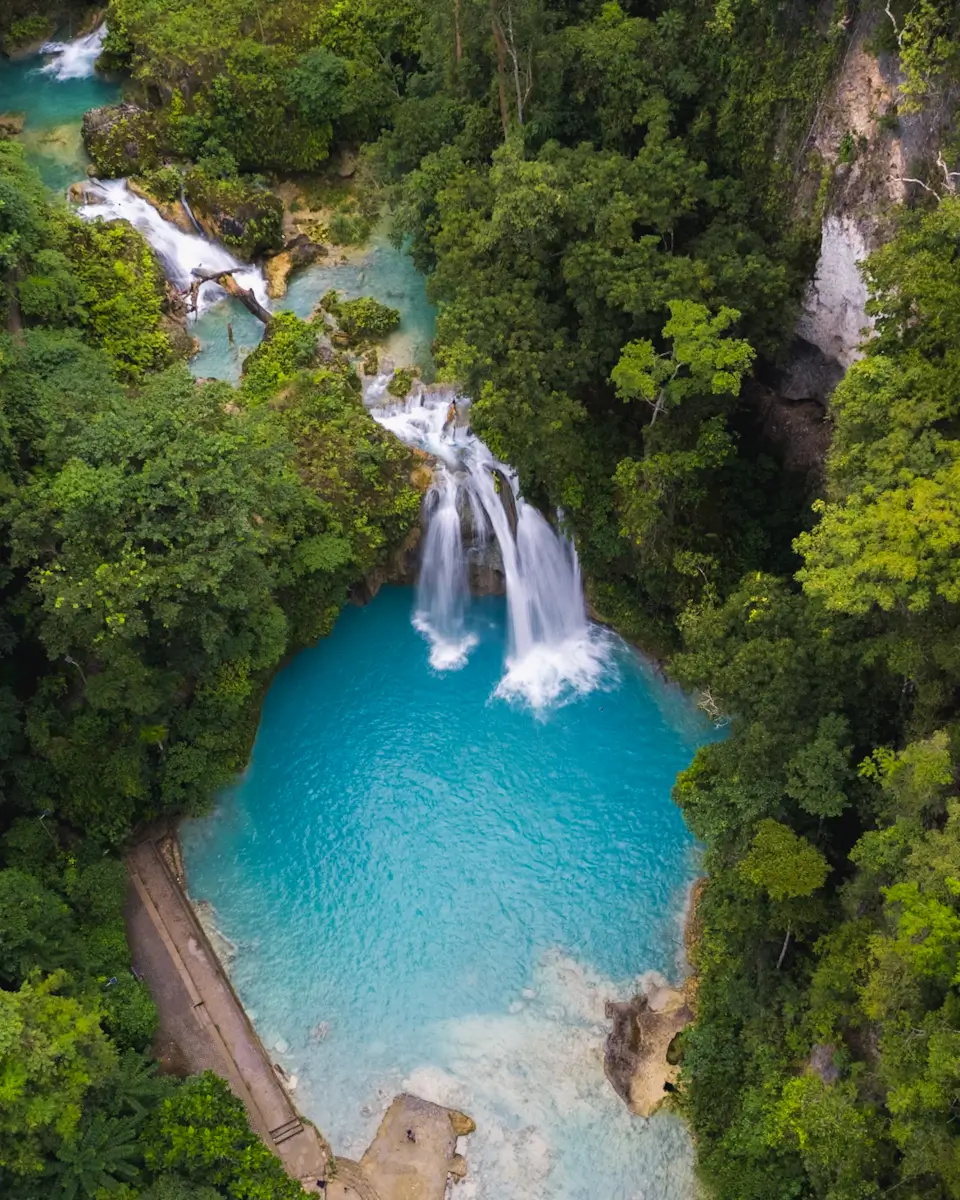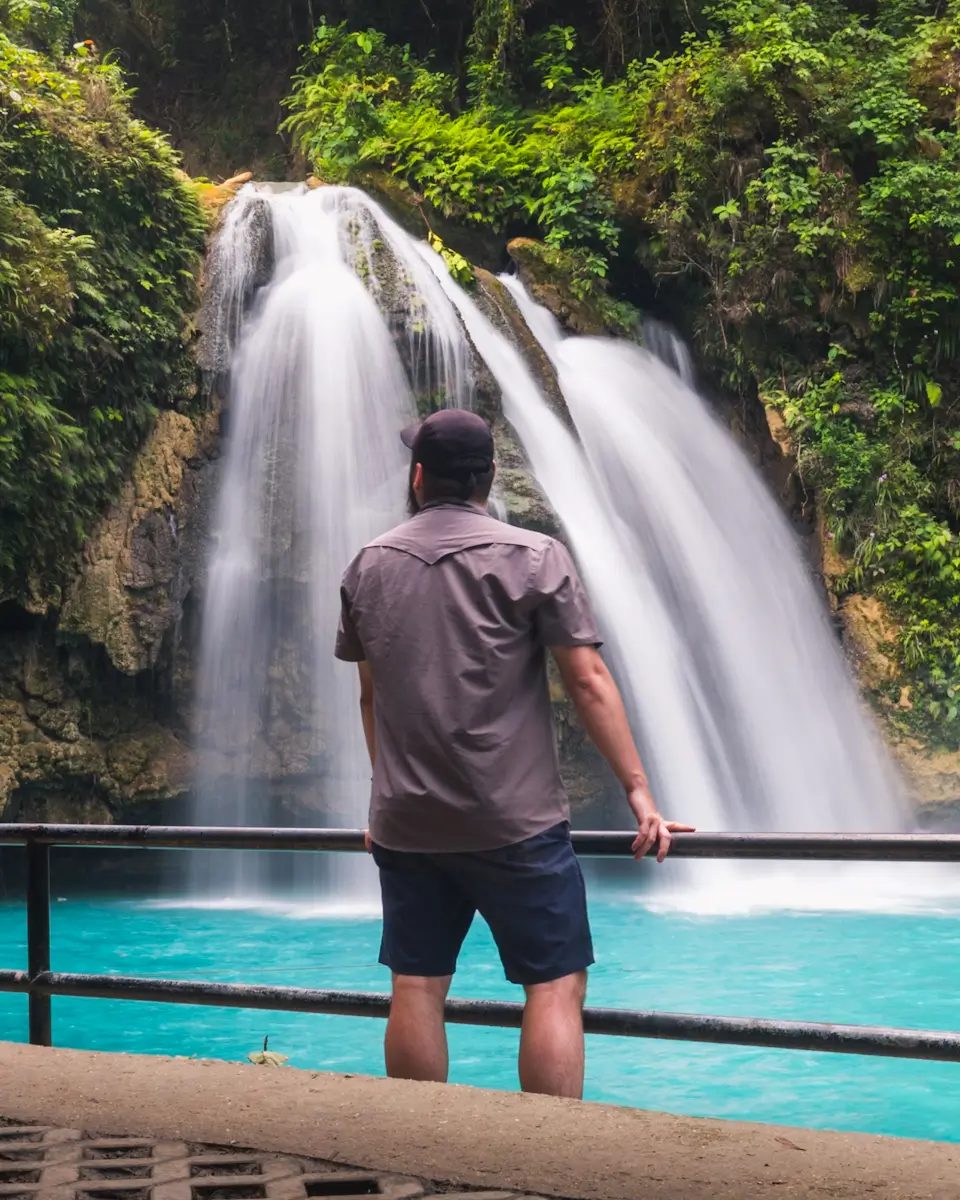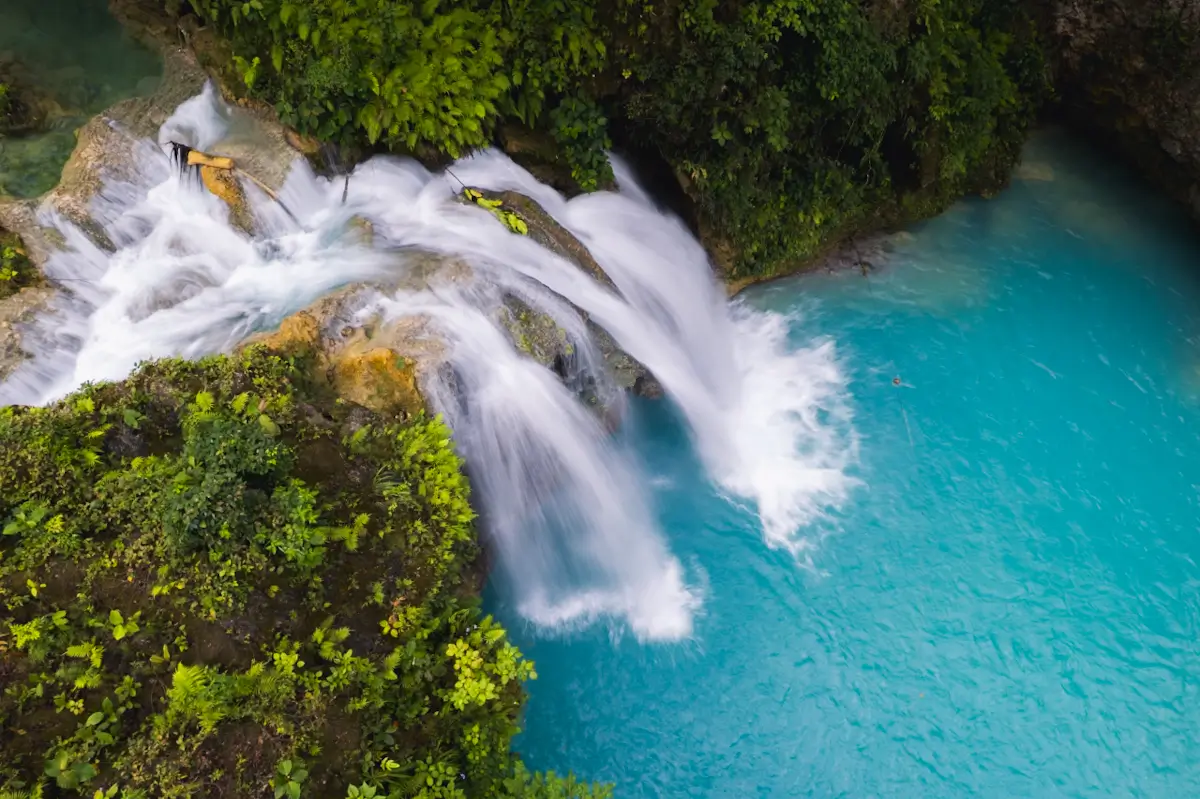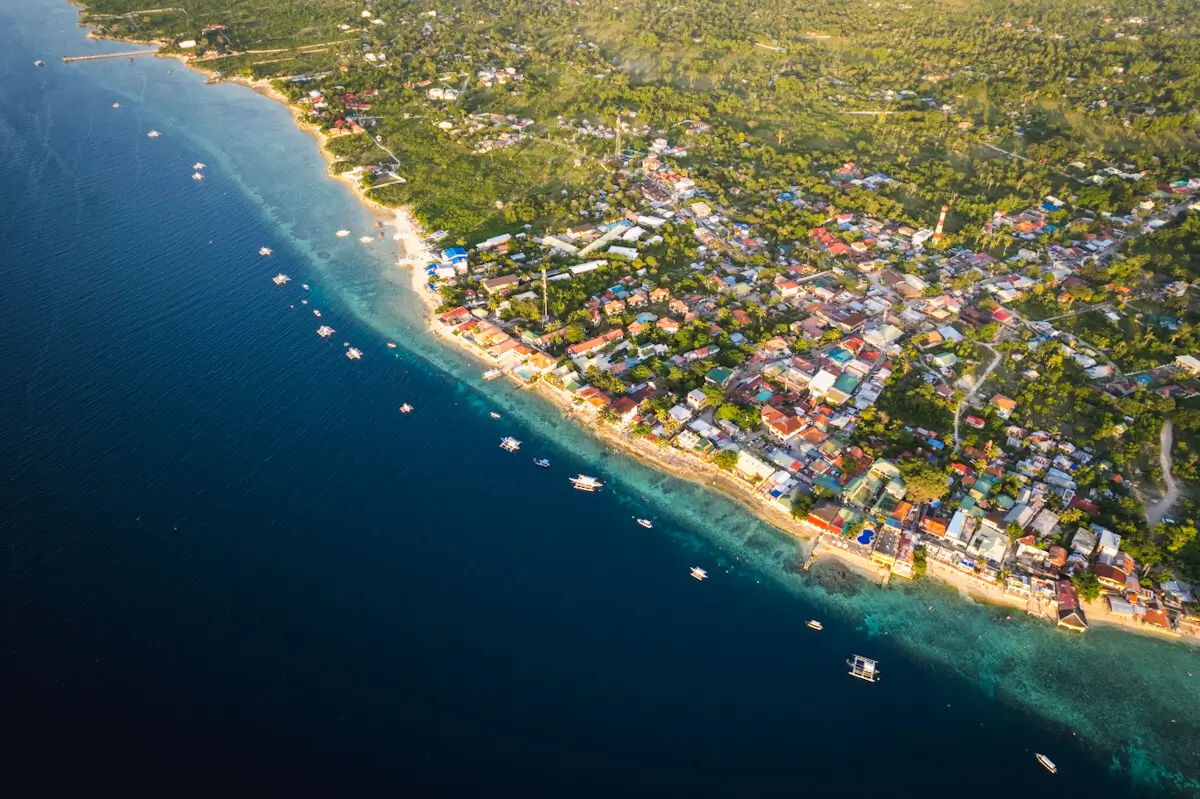Kawasan Falls in Badian, Cebu, is easily the most famous waterfall in all of the Philippines, and as a result it’s also one of the busiest and most commercialized.
If you’ve browsed the travel photos of anyone who’s visited the Philippines, you’ve definitely seen Kawasan Falls before. Not only is the waterfall well and truly popular in its own right, it’s also the iconic end point to many of the canyoneering tours popular among visitors to Moalboal. While the waterfall is undeniably beautiful, and the turquoise water is some of the most vibrant you can find, I usually skip Kawasan Falls in favour of the many other nearby waterfalls that offer a more authentic nature experience. That said, if you’re like me and plan on visiting every waterfall once, here’s all the info you need.
Continue reading this blog post for all the necessary information to visit Kawasan Falls for yourself. I’ve shared where to find it, how to get there, the entrance fee, and more.

About Kawasan Falls
Kawasan Falls has been a tourist destination near Moalboal since the 80s, and it’s easy to see why. The lovely waterfall features some of the bluest water you’re going to see anywhere, and the pool at the base of the falls is huge and perfect for swimming. In the past decade, its popularity has surged, fuelled especially by the rise of canyoneering in the river upstream. Today, most visitors arrive at the falls as the final stop on a guided canyoneering route that leads downstream through a series of smaller waterfalls and natural pools, ending at the main cascade. While still beautiful, the area has become increasingly commercialized and busy, and there’s more trash lying around than I’d really like to see, especially given the higher-than-average entrance fee.
The first time I visited Kawasan Falls was in 2017, and at the time it was possible to walk up to several upper falls and a very aesthetic dam that at the time was an instagram-famous photo spot (maybe even more so than the main falls). In 2021 the infrastructure around Kawasan Falls was heavily damaged, and after a two-year closure the falls reopened, however now the only way to visit the upper falls is by spending the money to take a canyoneering tour. Honestly, the way I recommend seeing Kawasan Falls is as part of a canyoneering tour anyway, but it still sucks that the upper falls are now arbitrarily behind a paywall, making the walk to Kawasan Falls from below even less worth it.
It only takes about half an hour to reach Kawasan Falls, and the walk is pleasant enough, though if you are visiting any time other than first thing in the morning then you can expect to share the path with lots of other people.

Kawasan Falls Entrance + Guide Fees
There’s a 200 PHP entrance fee for Kawasan Falls, as well as a 50 PHP parking fee. Fortunately guides for Kawasan Falls aren’t mandatory. If you want to go canyoneering instead (my much preferred way of seeing Kawasan Falls), rates are between 1700 PHP and 2000 PHP per person, and should be arranged ahead of time.

How to Get to Kawasan Falls
Kawasan Falls is the closest waterfall to Moalboal, and is only about a 25 minute drive away.
If you’re staying on Cebu and planning on exploring all the waterfalls and beaches located in the south half of the island, Moalboal is the best place to base yourself. It’s easy to get there from Cebu City by bus or private transfer, and the town has plenty of restaurants, hotels, and activities.
From Moalboal, head south on Santander – Barili – Toledo Road for about 20 km. As you pass through the village approaching the falls, you’ll know you’re getting close because dozens of local tour operators will try to flag you down for canyoneering. The well-signed turnoff for Kawasan Falls is just after crossing the river and passing the church. A small parking lot is immediately visible on the side of the road. From here you’re on foot to the ticket office and the official start to your walk.

Tips for Visiting Kawasan Falls
Practice Leave No Trace principles by carrying out all your garbage and avoiding any actions that could harm the environment like leaving graffiti. That’s just trashy and gross.
As a visitor, you are responsible for helping to protect Kawasan Falls. Showing care for preserving natural attractions helps keep these sites pristine and also encourages locals to prioritize sustainable practices. Always pay entrance and guide fees—these often fund local conservation and create jobs for the local community. Go a step further by giving an additional donation, explicitly stating that it’s for conservation. Even a small amount that might not be significant to you can mean a lot to the locals. Asking how fees or donations are used for preservation shows locals that tourists value these efforts and motivates them to continue protecting the area.
Locals try to give you what they think you want in order to earn a living from tourism, and they will happily cut down trees, exterminate wildlife, pour concrete, and build trashy overpriced restaurants when they think that’s what tourists want most. You can reshape this perception—show through your words and spending that you value the natural beauty and authenticity of the area over commercialization.

When to Visit Kawasan Falls
The best time to visit Kawasan Falls is during the dry season, which lasts from December to May. This period offers warm, sunny weather with fewer rainy days, making it ideal for outdoor activities and exploring the island. If you want to see the waterfall at its peak though, it’s best to visit at the start of the dry season, when it’s still benefitting from the past six months’ worth of rain.
Year-round, temperatures in the area stay consistently warm, typically around 25°C to 32°C, so you can expect a tropical climate no matter when you visit. If you plan to travel outside the dry season, be ready for moderate but steady rainfall and pack some rain gear to stay comfortable during your trip.
As I’ve mentioned, Kawasan Falls is the busiest waterfall in Cebu. I visited right when it opened and had the waterfall to myself, though plenty more people started to show up as I was on my way out. If you don’t want to feel like you’re at a zoo, avoid visiting midday and get here as early as you can.

